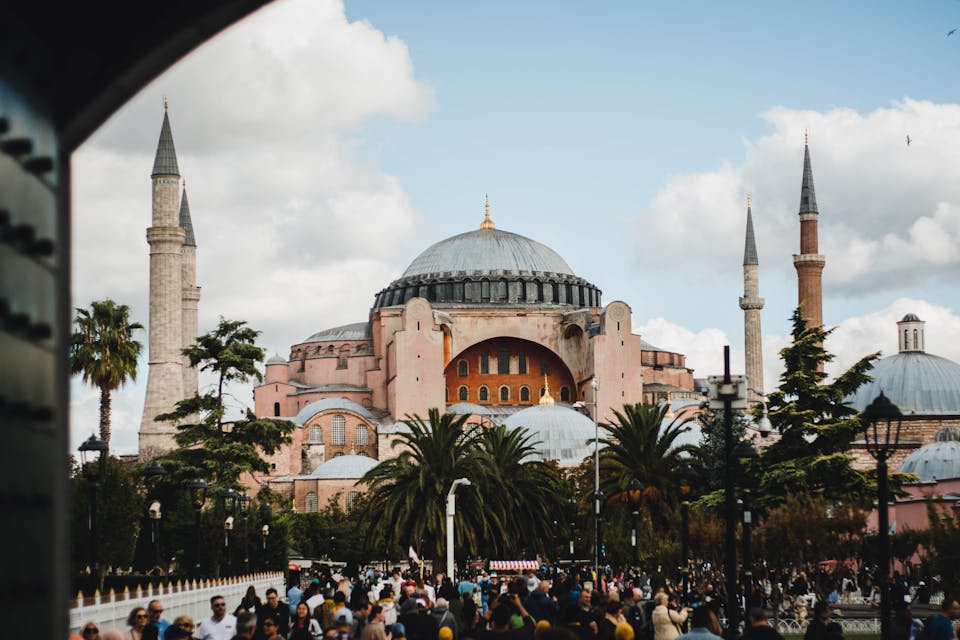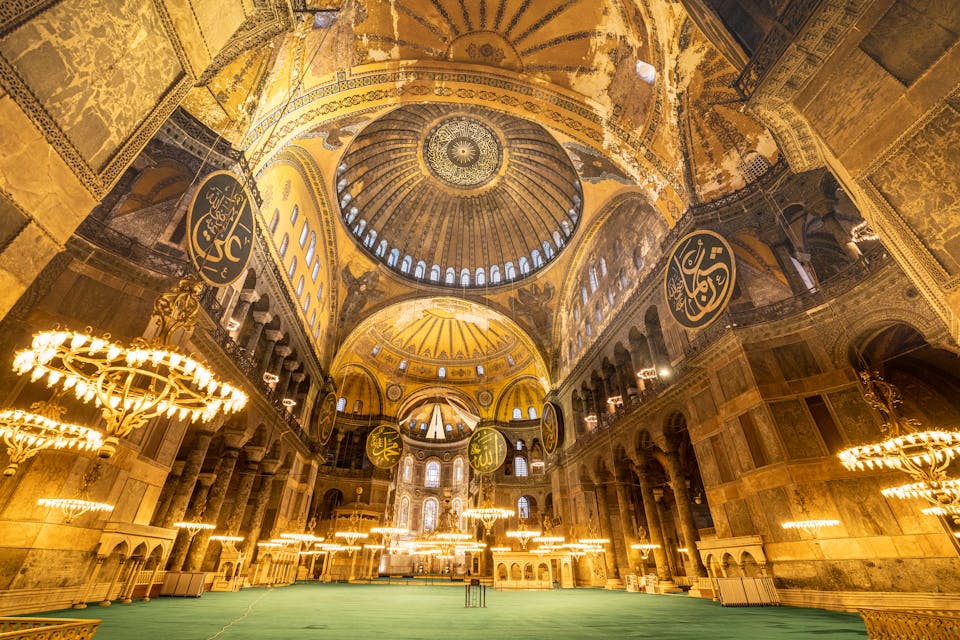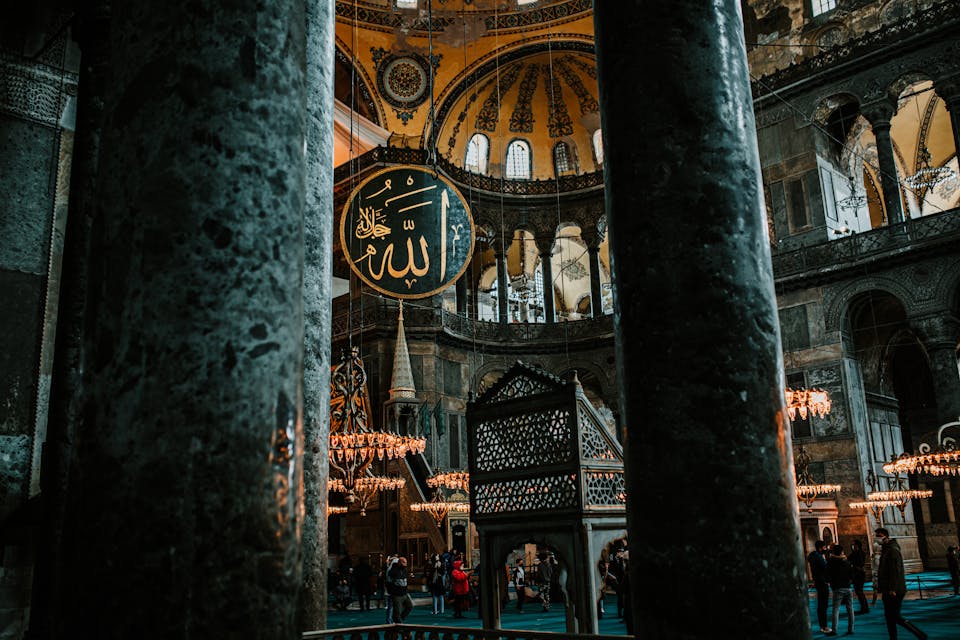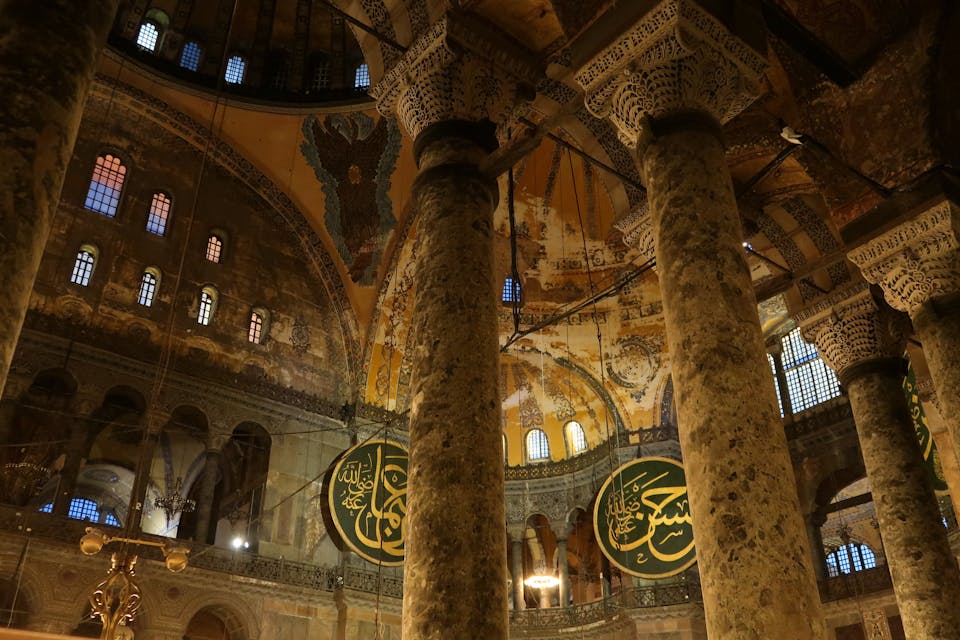Hagia Sophia Istanbul
Table of Contents
-
1. Where Is the Hagia Sophia Located?
-
2. When Was the Hagia Sophia Built?
-
3. Why Was the Hagia Sophia Built?
-
4. Who Built the Hagia Sophia?
-
5. What Is the History of the Hagia Sophia in Istanbul?
-
6. What Is the Significance of the Mosaics in the Hagia Sophia?
-
7. What Are Some Interesting Facts About the Hagia Sophia's Architecture?
-
7.1 Massive Dome
-
7.2 Innovative Design
-
7.3 Marble and Gold
-
7.4 Buttresses and Supports
-
7.5 Survived Earthquakes
-
8. Why Does the Suleymaniye Mosque Look Similar to the Hagia Sophia?
-
9. Are There 5-Star Hotels Near the Hagia Sophia?
-
9.1 Four Seasons Hotel Istanbul at Sultanahmet
-
9.2 Sura Hagia Sophia Hotel
-
9.3 Ajwa Hotel Sultanahmet
-
10. How Is the Hagia Sophia Used for Prayer Today?
1. Where Is the Hagia Sophia Located?
The Hagia Sophia is located in Istanbul, Turkey, specifically in the Sultanahmet district. This historic landmark is situated near other famous attractions, such as the Blue Mosque and Topkapi Palace. The exact address is Ayasofya Meydanı, Sultanahmet, Fatih, 34122 Istanbul. Positioned in the heart of the city, the Hagia Sophia is easily accessible by public transportation, including trams and buses, making it a must-visit destination for tourists exploring Istanbul.

2. When Was the Hagia Sophia Built?
The Hagia Sophia was originally constructed between 532 and 537 AD during the reign of the Byzantine Emperor Justinian I. The building was completed in just five years, an impressive feat considering its massive size and the architectural challenges involved. The Hagia Sophia has undergone several changes and renovations throughout its long history, reflecting the various cultural and religious shifts in the region.

3. Why Was the Hagia Sophia Built?
The Hagia Sophia was built to serve as the grand cathedral of Constantinople, the capital of the Byzantine Empire. Emperor Justinian I commissioned the construction to demonstrate the power and glory of his reign and to create a monumental place of worship that would surpass the grandeur of any other church in the world. The Hagia Sophia was intended to be a symbol of the unity between church and state and to reinforce the emperor's divine right to rule.

4. Who Built the Hagia Sophia?
The construction of the Hagia Sophia was overseen by two prominent architects, Anthemius of Tralles and Isidore of Miletus. Anthemius was a skilled mathematician and engineer, while Isidore was an expert in mechanics and physics. Together, they designed and built the Hagia Sophia using innovative techniques and materials, resulting in a structure that has stood the test of time and remains a marvel of engineering and architecture.

5. What Is the History of the Hagia Sophia in Istanbul?
The history of the Hagia Sophia is rich and complex, reflecting the changing tides of religion and politics in Istanbul. Initially built as a Christian cathedral, it was the world's largest cathedral for nearly 1,000 years. In 1453, following the Ottoman conquest of Constantinople, the Hagia Sophia was converted into a mosque by Sultan Mehmed II. Islamic features such as minarets were added, and it served as one of the most important mosques in the Muslim world for nearly 500 years. In 1935, under the secular reforms of Mustafa Kemal Atatürk, the Hagia Sophia was transformed into a museum. Recently, in 2020, it was reconverted into a mosque, although it remains open to visitors of all faiths.

6. What Is the Significance of the Mosaics in the Hagia Sophia?
The mosaics of the Hagia Sophia are significant for their artistic beauty and their historical value. These intricate artworks, which include religious icons, biblical scenes, and portraits of emperors, are exemplary of Byzantine art. The mosaics reflect the religious and political changes that have taken place over the centuries. When the Hagia Sophia was converted into a mosque, many of the mosaics were plastered over but were later uncovered during the building's time as a museum. Today, they offer a glimpse into the building's rich past and the artistic achievements of the Byzantine Empire.
7. What Are Some Interesting Facts About the Hagia Sophia's Architecture?
7.1 Massive Dome
The Hagia Sophia's dome is one of its most striking features. At the time of its construction, it was the largest dome in the world, measuring about 31 meters (102 feet) in diameter.
7.2 Innovative Design
The architects employed a unique combination of a basilica and a centralized building plan, which was innovative for its time.
7.3 Marble and Gold
The interior is adorned with various types of marble and gold mosaics, creating a stunning and opulent atmosphere.
7.4 Buttresses and Supports
The building's massive dome is supported by four pendentives, a revolutionary architectural feature at the time.
7.5 Survived Earthquakes
The Hagia Sophia has withstood several significant earthquakes over the centuries, thanks to its robust and flexible design.
8. Why Does the Suleymaniye Mosque Look Similar to the Hagia Sophia?
The Suleymaniye Mosque, constructed in the 16th century by the famous Ottoman architect Mimar Sinan, bears a resemblance to the Hagia Sophia due to the influence the latter had on Ottoman architecture. The Hagia Sophia's grandeur and architectural innovations inspired many subsequent buildings in the Ottoman Empire. Sinan admired the Hagia Sophia and incorporated its structural elements, such as the large central dome and semi-domes, into the design of the Suleymaniye Mosque, creating a blend of Byzantine and Islamic architectural styles.
9. Are There 5-Star Hotels Near the Hagia Sophia?
Yes, there are several 5-star hotels located near the Hagia Sophia, offering luxurious accommodations and convenient access to this historic site. Some notable options include:
9.1 Four Seasons Hotel Istanbul at Sultanahmet
This luxury hotel is housed in a century-old neoclassical Turkish prison and offers stunning views of the Hagia Sophia.
9.2 Sura Hagia Sophia Hotel
Located just a short walk from the Hagia Sophia, this hotel provides modern amenities and a blend of traditional Turkish decor.
9.3 Ajwa Hotel Sultanahmet
Combining Ottoman-inspired interiors with contemporary comforts, this hotel is a favorite among visitors seeking a luxurious stay.
10. How Is the Hagia Sophia Used for Prayer Today?
Today, the Hagia Sophia serves as a mosque, where Muslim prayers are held regularly. The building is open to visitors outside of prayer times, allowing people of all faiths to admire its architectural and historical significance. The transition back to a mosque has been managed to ensure that the Hagia Sophia remains accessible to tourists while respecting its function as a place of worship. Special areas are designated for prayers, and guidelines are in place to accommodate both worshippers and visitors.